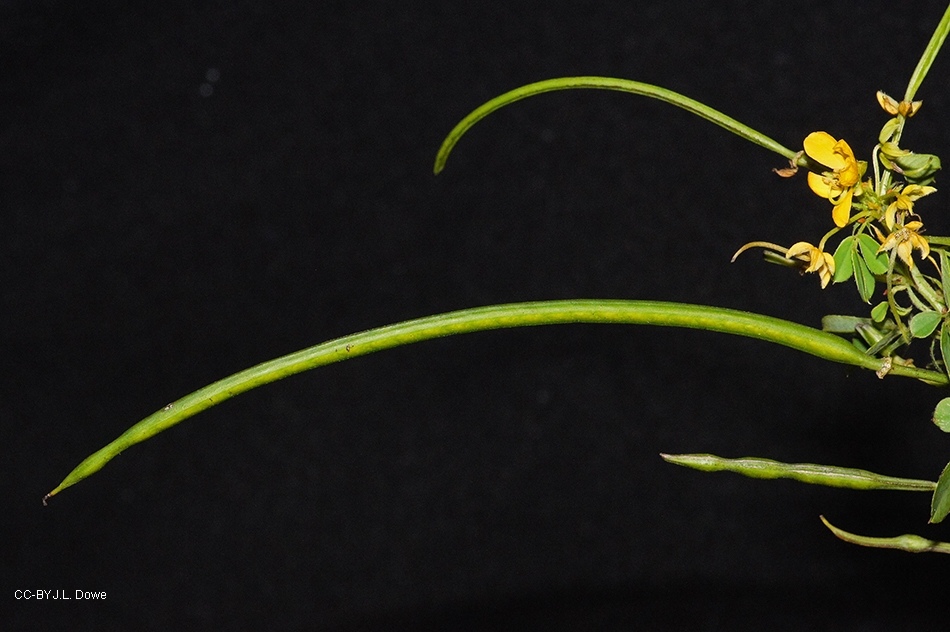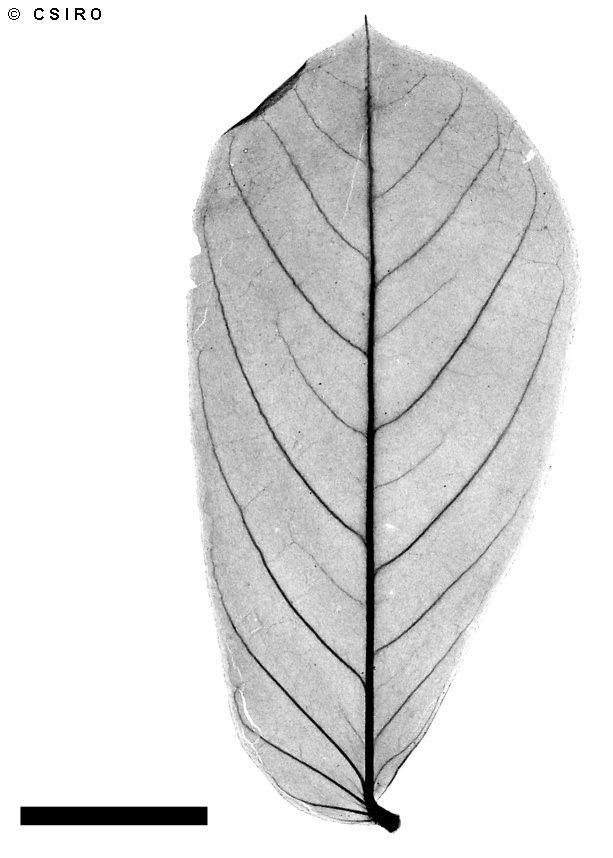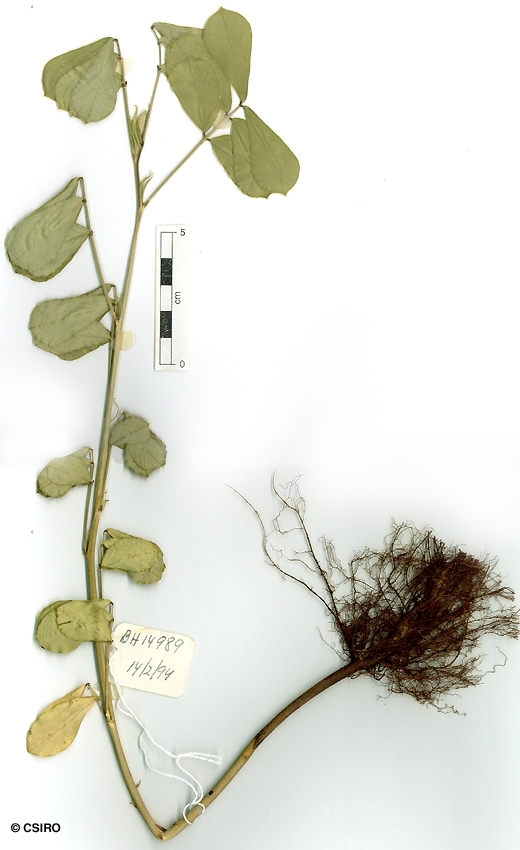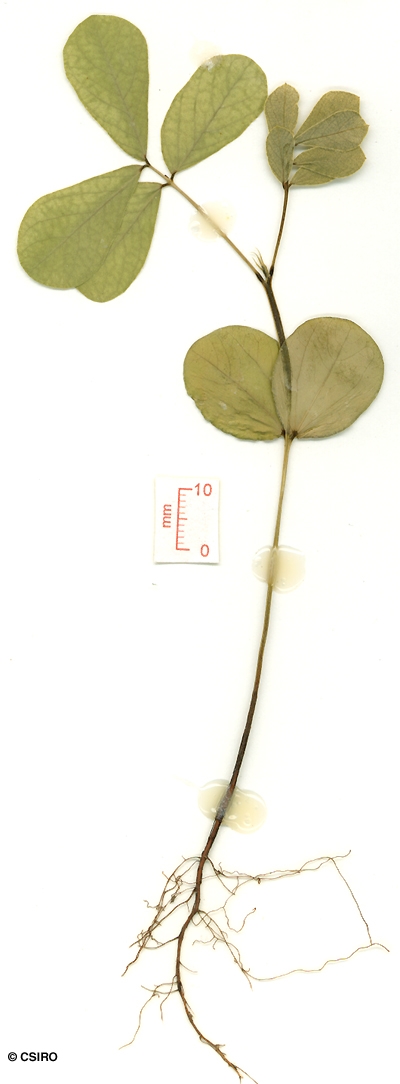Australian Tropical Rainforest Plants - Online edition
Senna obtusifolia (L.) H.S.Irwin & Barneby





Irwin, H.S. & Barneby, R.C. (1982) Memoirs of the New York Botanical Garden 35 : 252.
Java Beans; Java Bean; Sicklepod
Usually flowers and fruits as a shrub about 1-2 m tall.
Stipules pubescent, linear, about 10-18 x 0.5-1 mm with a definite midrib. Leaflet blades obovate to spathulate, about 25-50 x 15-25 mm. Terminal pair of leaflets larger than the basal pair of leaflets. A peg-like gland (2-3 mm long) present on the flattened upper surface of each compound leaf rhachis between the basal pair of leaflets.
Seeds rhomboidal, about 4 mm long.
Cotyledons almost orbicular, about 25-30 x 20-25 mm, apex rounded, base auriculate. First pair of leaves compound, each leaf with 4-6 leaflets. At the tenth leaf stage: underside of the leaflets clothed in white appressed hairs. A peg-like gland visible on the upper surface of the compound leaf rhachis between the basal pair of leaflets. Stipules linear, filiform, about 10-16 mm long. Seed germination time 11 to 16 days.
An introduced species probably originating in tropical America but now a pantropic weed. naturalised in WA, NT, CYP, NEQ, CEQ and southwards to coastal central Queensland. Altitudinal range in northern Australia from near sea level to 400 m. Usually grows as a pasture weed but sometimes found along roads and in disturbed areas in rain forest.
This taxon is treated as Senna obtusifolia in WA.
This species is toxic if eaten in large quantities. The seeds contain a toxin. Despite this, the young shoots have been used as a vegetable and the seeds as a substitute for coffee.
An unpalatable species of northern coastal pastures, sugar-cane headlands and roadsides. Sometimes toxic to rats in laboratory tests. The leaves were used as a vegetable in Malaysia, also for medicinal purposes. Hacker (1990).





